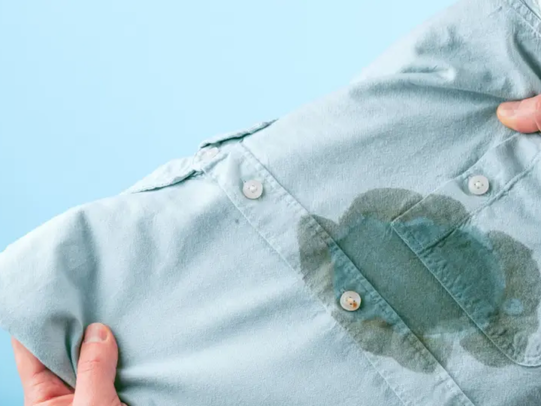Common Mistakes to Avoid When Treating Grease Stains
Grease stains are some of the most frustrating marks to remove from clothing, upholstery, and other fabrics. Whether it’s a splash of olive oil, a dollop of butter, or a smear of automotive grease, treating the stain properly makes all the difference.
Yet, many people unknowingly make critical mistakes during stain removal-mistakes that can set the stain permanently. In this guide, we’ll explain the most common grease stain removal errors, and give you practical, effective methods on How to Get Grease Stains Out of Clothes by cleaning experts.
1. Rubbing the Stain Instead of Blotting
Mistake:
Rubbing a fresh grease stain might seem helpful, but it spreads the grease deeper into the fibers and can enlarge the affected area.
Correct Method:
- Blot the stain with a clean paper towel or cloth.
- Scrape off any residue with a dull knife.
- Place a towel or cardboard behind the fabric to prevent bleed-through.
Example:
If you drip frying oil on your shirt, gently blot instead of rubbing-rubbing only embeds the grease further.
2. Using Hot Water Too Soon
Mistake:
Many assume hot water melts grease away. But in reality, applying hot water before treatment can cause the stain to set permanently.
Correct Method:
- First pretreat the stain.
- Then wash the fabric at the temperature recommended on the care label.
- Delicates may require cold water.
Example:
Pouring boiling water on an oily polyester top can seal the stain into the synthetic fibers.
3. Drying Before the Stain Is Gone
Mistake:
Using a clothes dryer on a stained garment can bake the grease into the fabric, making it permanent.
Correct Method:
- Always air dry after treating.
- Only use a dryer when the stain is completely gone.
Example:
Wash your pants but still see a grease mark? Don’t throw them in the dryer-let them air dry and treat again if needed.
4. Skipping Pretreatment
Mistake:
Throwing the item straight into the washer without pretreatment will rarely remove grease stains.
Correct Method:
- Apply dish soap or a stain remover directly to the spot.
- Let it sit for 10–15 minutes.
- Gently scrub if needed.
Example:
Dish soap is great for pretreating cooking oil stains on cotton shirts.
5. Not Absorbing Excess Grease First
Mistake:
Failing to blot or absorb oil before washing means more grease stays embedded in the fibers.
Correct Method:
- Use baking soda, cornstarch, or talcum powder on fresh stains to soak up grease.
- Let it sit for 10–15 minutes before brushing off.
Example:
After dropping cheesy pizza on your jeans, apply cornstarch first to lift the oils.
6. Using Ineffective Cleaning Products
Mistake:
Regular laundry detergent isn’t formulated to break down grease.
Correct Method:
- Use degreasing dish soaps (like Dawn), enzyme-based cleaners, or baking soda paste.
- Always read the care label before choosing a cleaner.
Example:
Tackling an old motor oil stain on denim? Use a heavy-duty degreaser before washing.
7. Ignoring Fabric Care Labels
Mistake:
Treating silk, wool, or rayon the same as cotton or denim can ruin your garment or worsen the stain.
Correct Method:
- Read and follow the care tag.
- Use gentle cleaners or take to a dry cleaner for sensitive fabrics.
Example:
A silk blouse stained with salad dressing should be spot-cleaned gently or taken to a pro-not scrubbed or machine-washed.
8. Giving Up Too Soon
Mistake:
Sometimes it takes more than one treatment to remove grease. Quitting too soon locks in the stain.
Correct Method:
- Repeat the treatment cycle.
- Try baking soda paste, vinegar, or even a small amount of WD-40 followed by proper washing (on durable fabrics only).
Example:
A stubborn butter stain may require two or three rounds of dish soap and air drying before it disappears.
FAQ: Treating Grease Stains
Q: Can I use baking soda on all fabrics?
A: Generally yes, but always do a spot test on delicate materials like silk or wool.
Q: What if the grease stain is old?
A: Reactivate it with warm water, then pretreat with dish soap or baking soda paste. Repeat the process if needed.
Q: Is WD-40 safe to use on clothes?
A: Only on sturdy fabrics. It helps re-liquify old grease, but follow with thorough washing and never machine dry afterward.
Q: Why does the stain look bigger after cleaning?
A: This often happens when rubbing or overusing liquid spreads the grease. Always blot and absorb excess oil first.
Q: Does regular detergent work on grease stains?
A: Not on its own. Pretreatment with a degreasing agent is essential for effective removal.
Conclusion: Remove Grease Stains the Smart Way
Grease stains don’t have to ruin your clothes, but how you treat them matters a lot. Here’s a quick recap:
- Blot, don’t rub
- Pretreat before washing
- Avoid heat until stain-free
- Absorb first, clean second
- Use products suited to your fabric
By avoiding these common mistakes and using the right approach, you’ll have a much better chance of removing grease stains for good-without damaging your favorite clothes in the process.
Related Articles:
13 Common Clothing Stains and How to Remove Them

